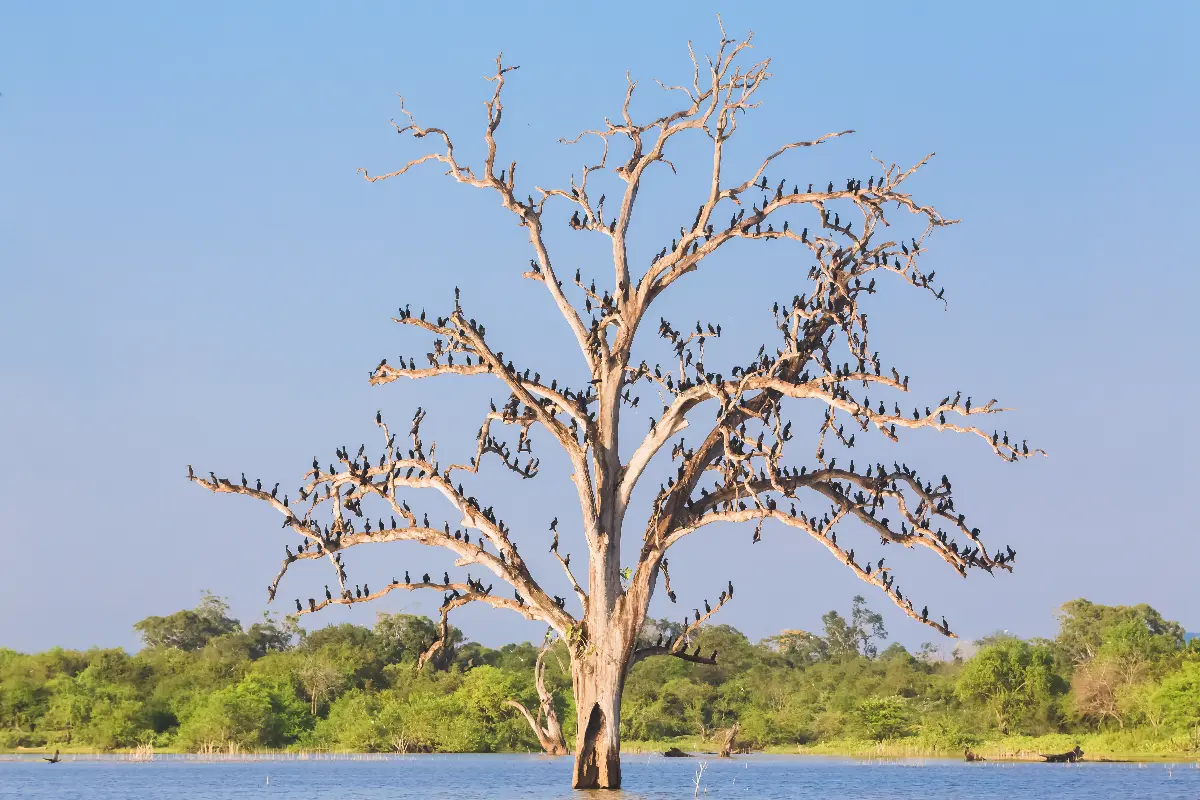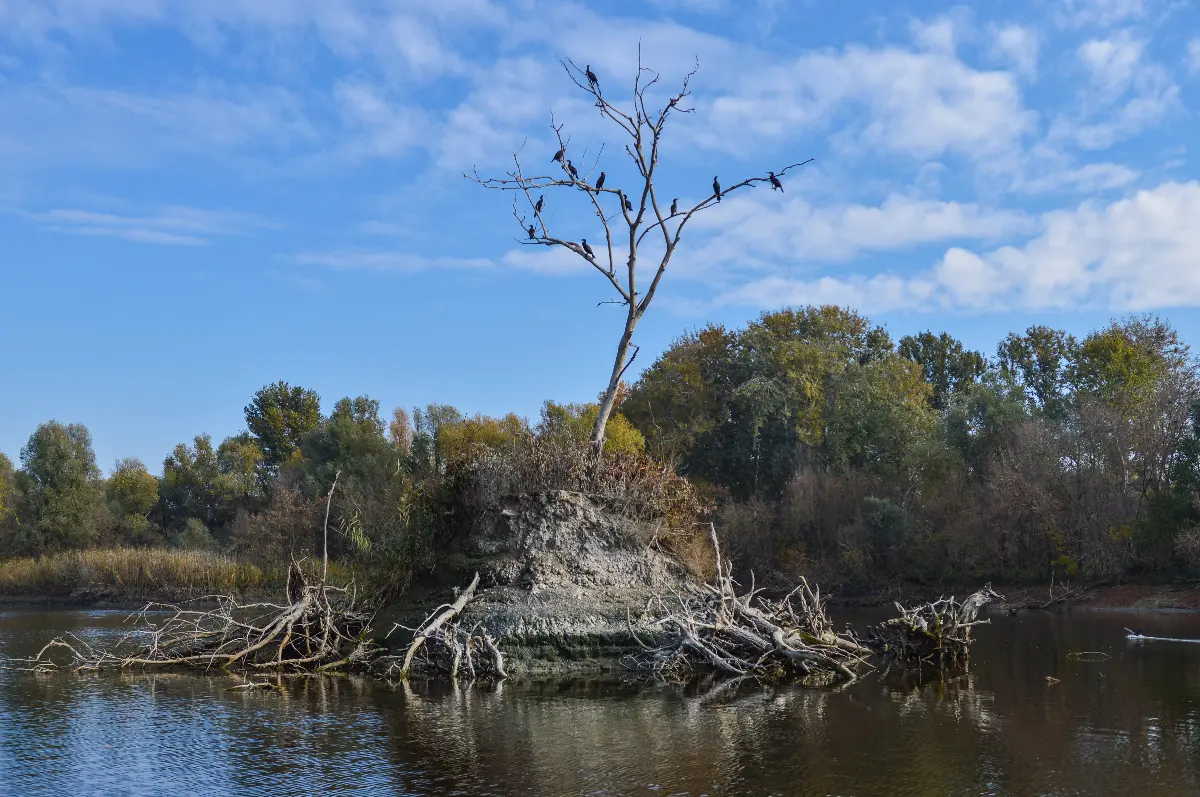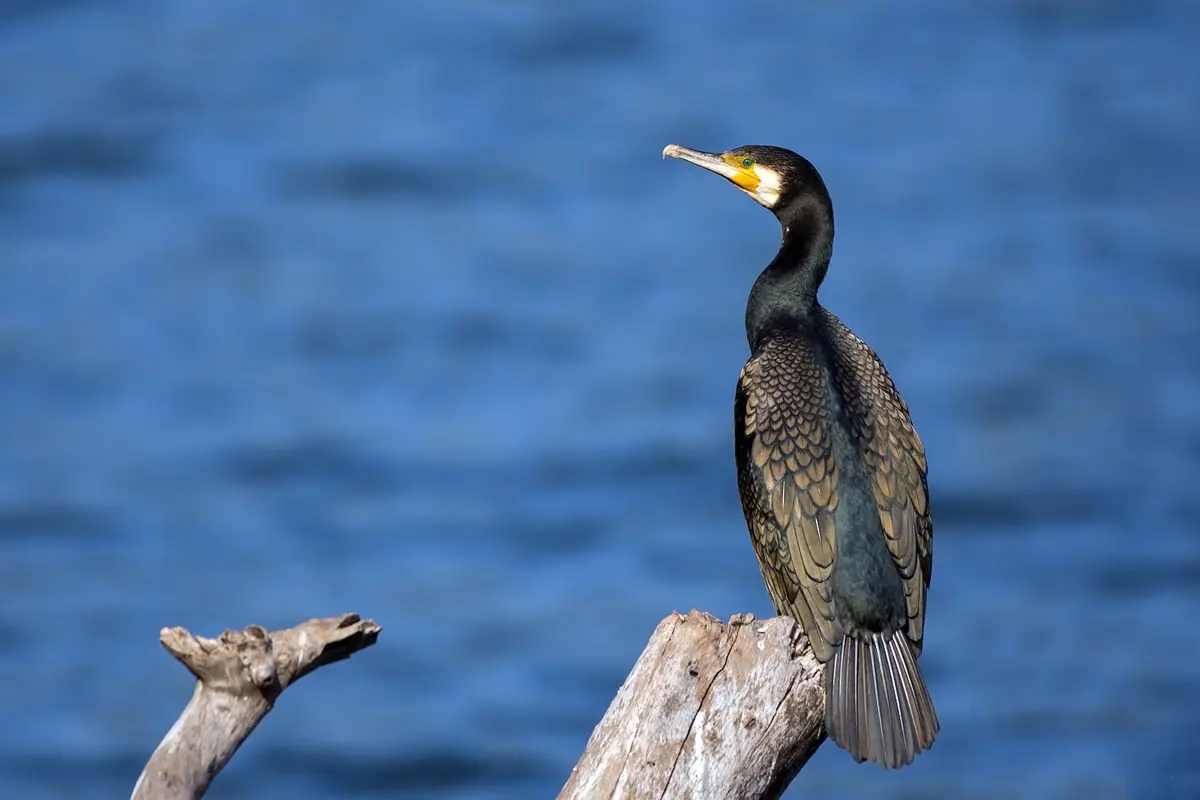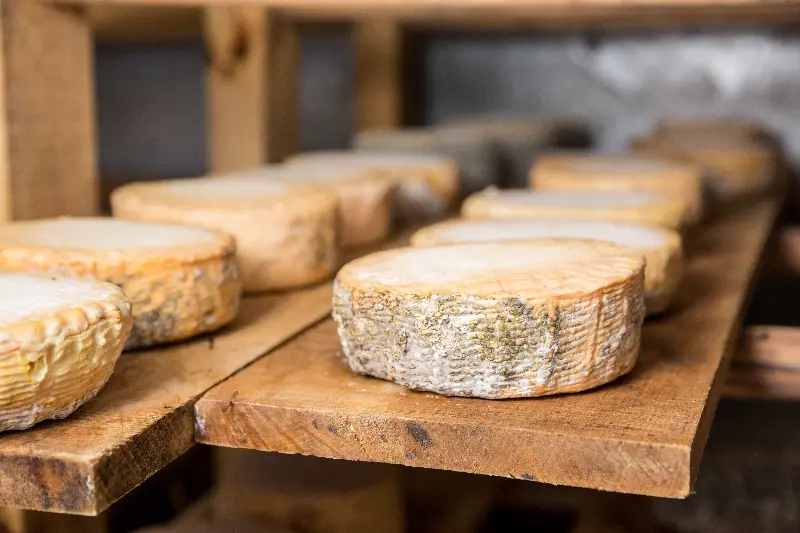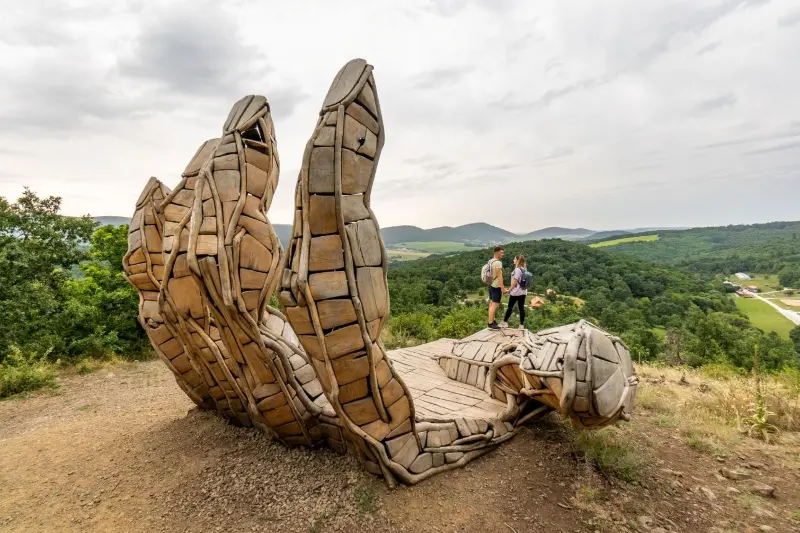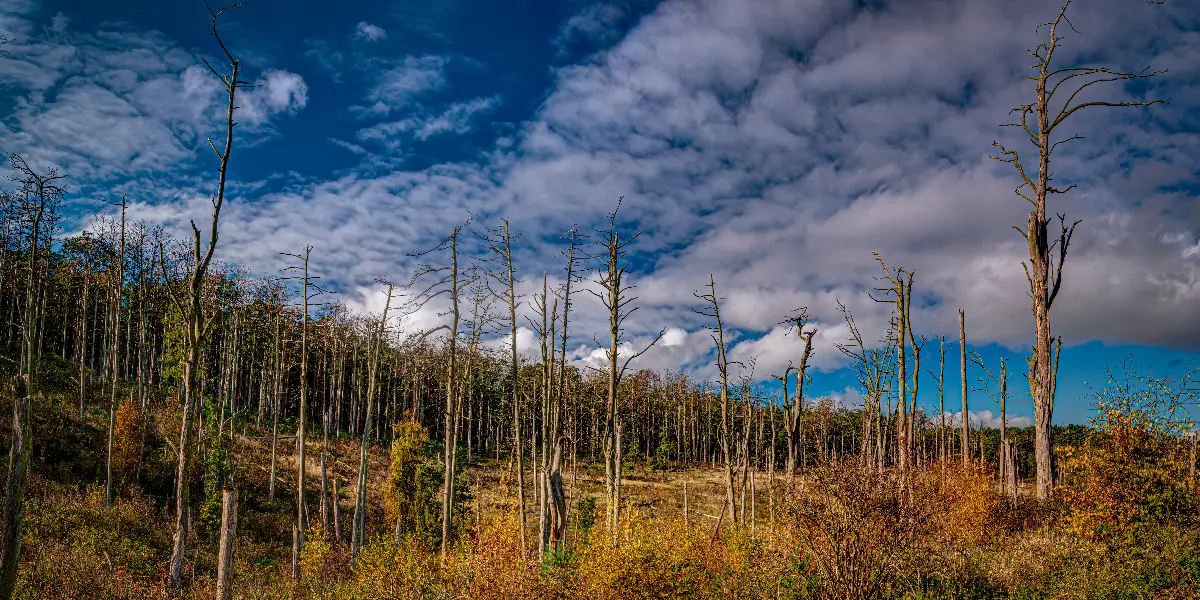
Helyszín címkék:
It is incredible how cormorants transform their habitats into lunar landscapes!
Szabó Sára
Before mapping out a highly complex ecological problem, it is worth knowing exactly which animals we are talking about. We distinguish small cormorants from cormorants (hereinafter cormorants): both species are native in Hungary. While the former is 45-55 centimetres long and its domestic breeding stock consists of 600-800 pairs, its sibling is much larger, just as the problems it causes. It is currently estimated that 1,500-2,000 pairs nest in the country, but the troubles begin in the winter, when the wandering / migrating population from the north is added to this number.
Native species as well as unwelcome guests are responsible for the problems
In the 1960s and 1970s, the cormorant was on the verge of extinction. It was a fierce enemy of small-scale coastal fishermen and they did all they could to repel them in order to protect fish stocks. However, thanks to conservation movements, their numbers have increased again and with the decline of coastal fishing, the species no longer has a bad name. However, the real problem is caused by climate change, due to which birds has invaded the inland waters of Europe. Due to the mild winters, lakes and river sections do not freeze over, which means the table set for a predator fleeing from the northern storms in the “colder” months.
They cause incalculable damage to the native fish stock in Hungary
As the trees shed their foliage in the winter, the fish also “retreat for the winter”. They cool down together with the water, losing their speed, flexibility and ability to escape. In contrast, the cormorant needs to eat even more during the winter months in order to better heat its body. Fish burrowing into the depths of the lake have no chance of escaping and would even be disadvantaged at their full strength: the cormorant is an awfully trained, hungry, ruthless hunting bird. “Cormorants are like wolves: they hunt in teams, everyone catches what they can. During the unbridled massacre, they wound more fish with their beaks than they can consume,” says Ferenc Lévai, a spokesman for the Hungarian Interprofessional Organization for Aquaculture and Fishing, adding that this species is able to bring up burrowed fish from even the depth of 40 metres in order to get two pounds of food per day.
It ravages, feasts, loots, pillages and leaves the next day
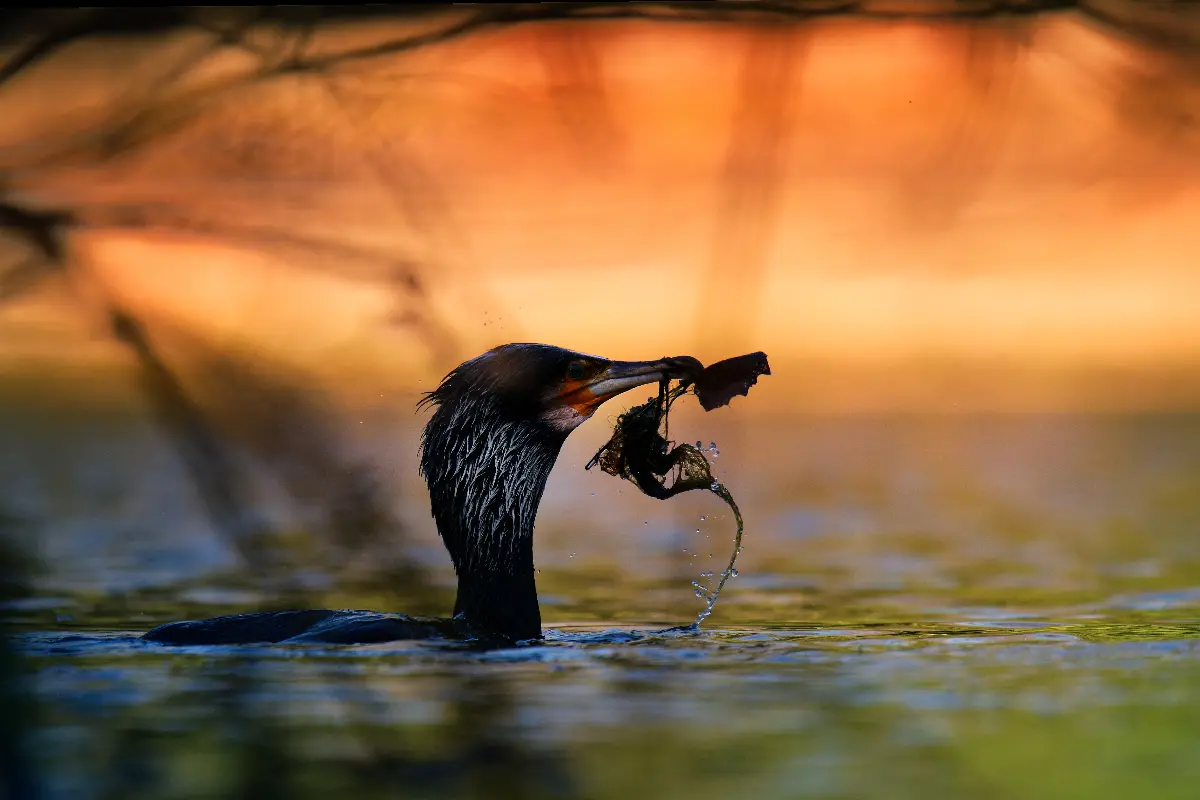
Dr. József Majer, a biologist and a retired professor at the University of Pécs, says that in recent years it has been proven that this type of destruction is leading to a serious decline in the native fish stock in Hungary. However, the damage caused by the birds, which has risen to a staggering extent in Europe, has several components, harming not only fish but also trees. Cormorants nest in a colony, a colony of 60-100 birds brood in an area and their corrosive faeces causes serious damage to various parts of forests. These areas are extremely noticeable as the stripped-down trees give the impression of a lunar landscape. Their mass occurrence is typically noticeable in Hungary at Balaton Minor, Lake Velence, Hortobágy and Drávaszabolcs. The situation is further nuanced by the fact that the dead tree is needed by wildlife as it provides many species with a habitat and source of nourishment.
So what’s the solution?
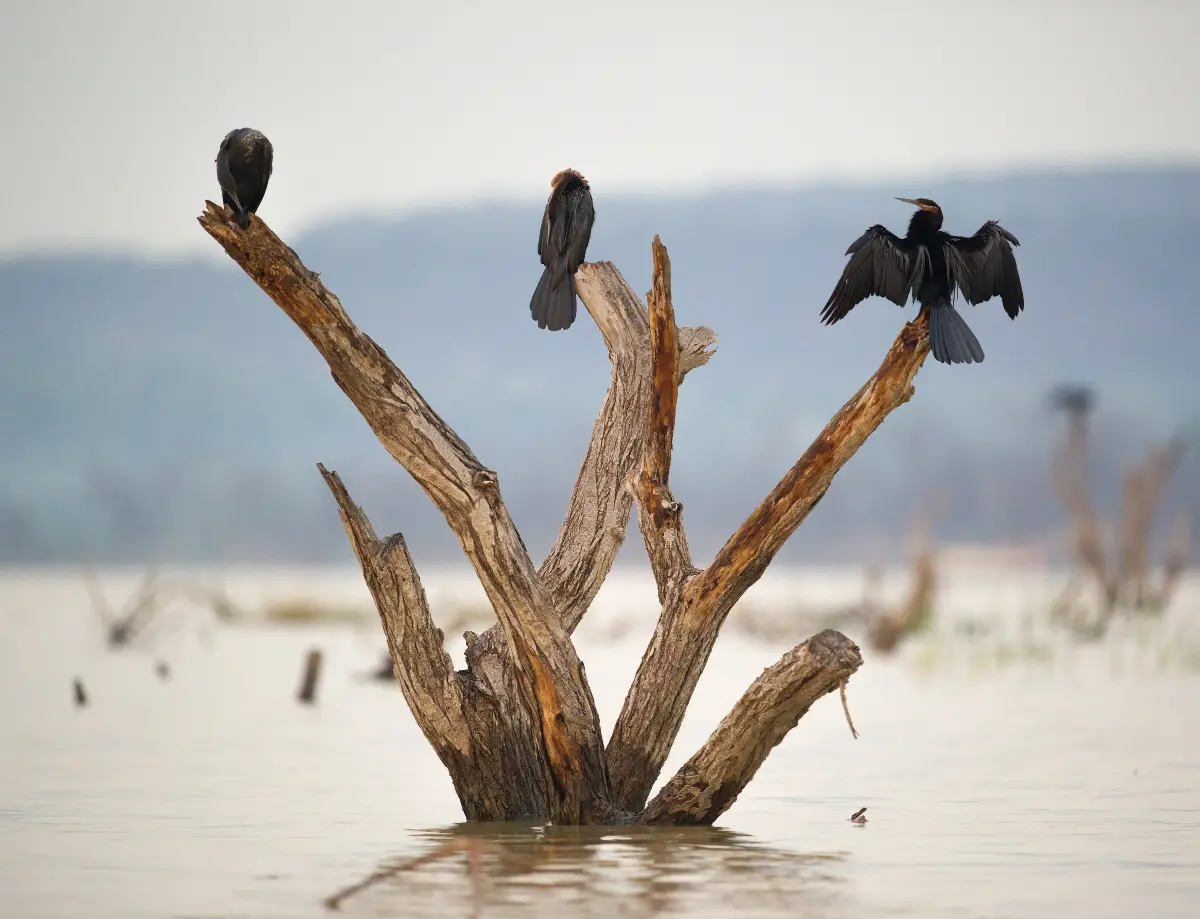
In short: compromise and cooperation. In a bit more detail: there are several methods that professionals try in Hungary and across Europe. There are countries where a direct feeding area for the birds is established, while elsewhere they prevent landing with a line stretched on the lake shore. However, the fishing community has more radical ideas: they feel the future is unimaginable without destroying the cormorants. The solution still seems to be a long way off and we may never find one without compromise. We can only hope that man and nature will learn to coexist as soon as possible in a way that is not to the detriment of either species.
